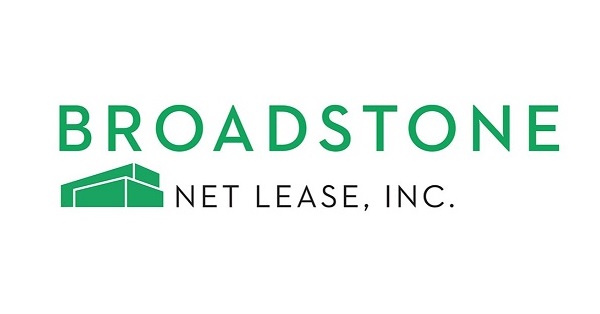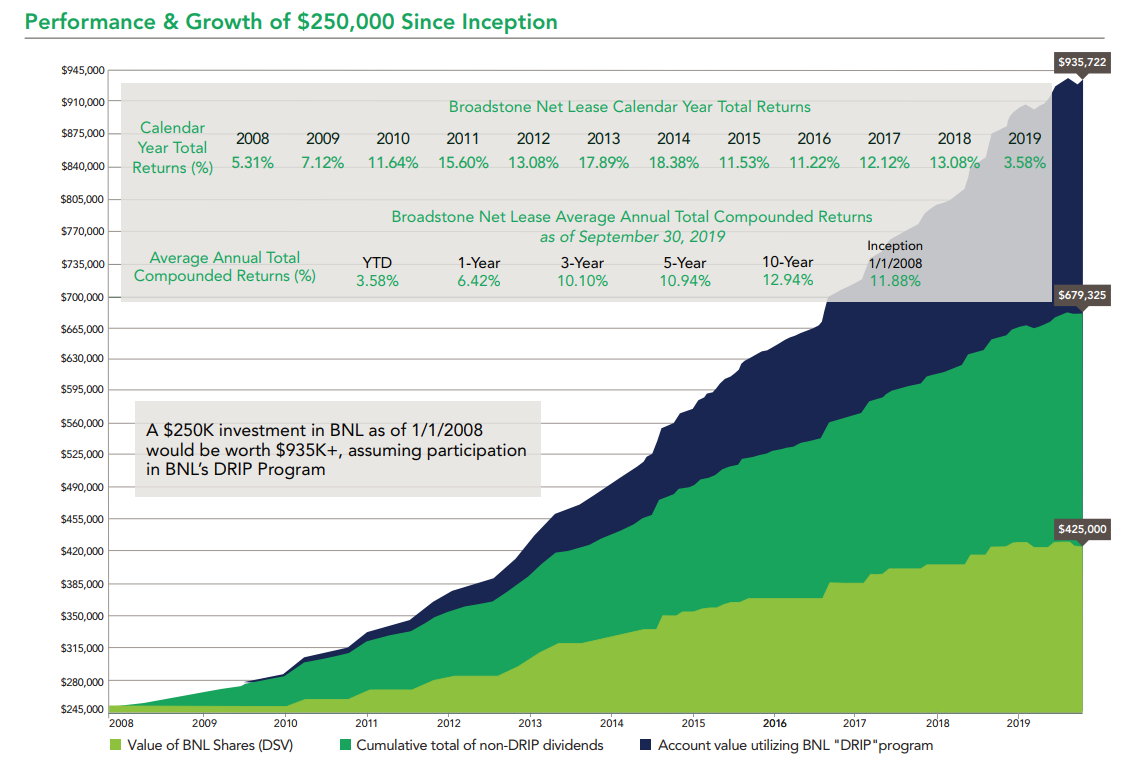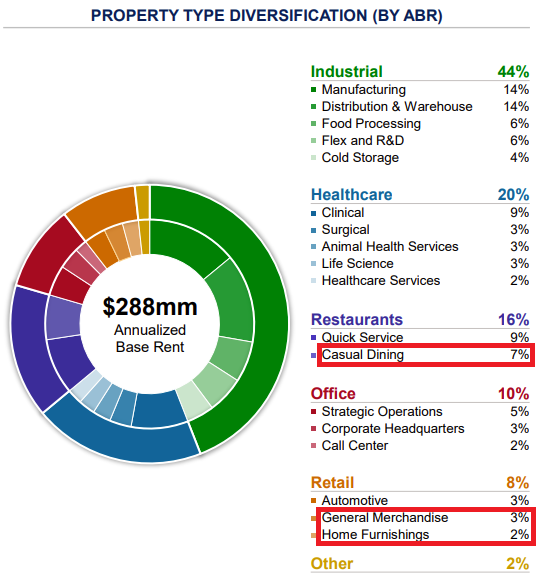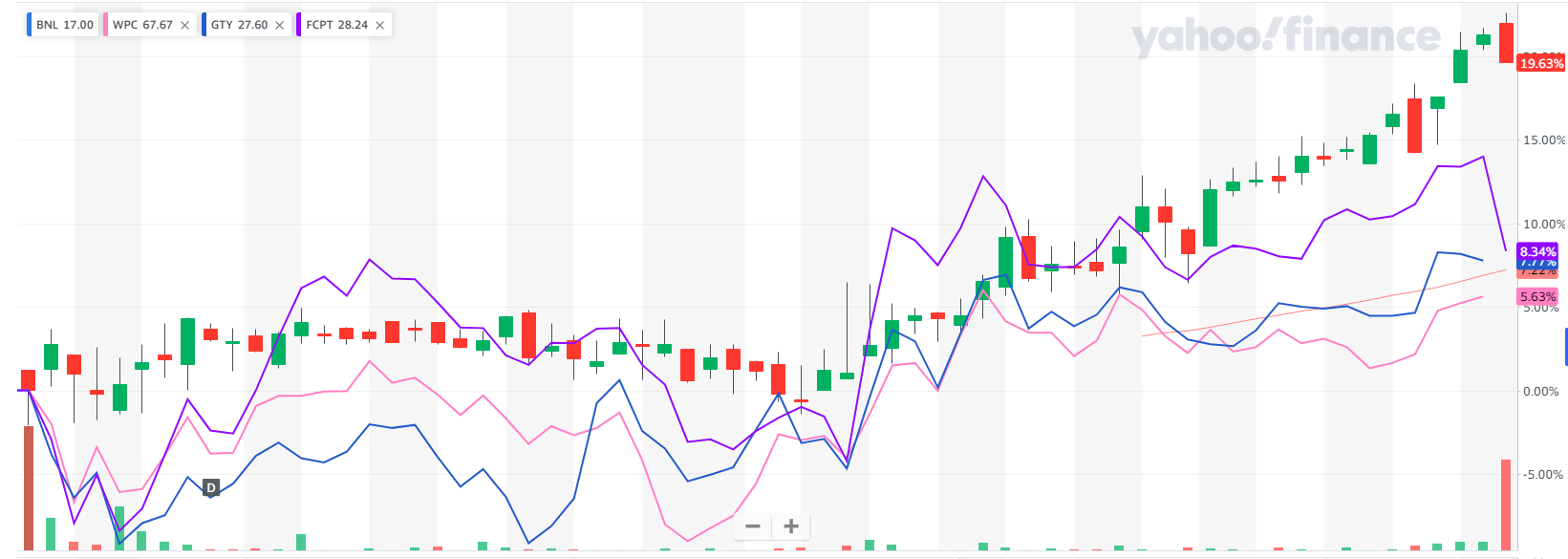I already own a meaningful amount of Broadstone (BNL) shares but this is the first time I write down formally about the logics behind investing in it.

Broadstone is a REIT in the triple net (NNN) real estate industry. Before continue to read through the rest of this post, it is necessary to understand what triple net is. In fact, there are dozens of triple net REITs listed on the stock market.
1. Fundamentals
1.1 The History
Broadstone was a non-traded public REIT before its IPO. It was not traded in the stock market but it disclosed financial reports quarterly to the general public. I have been an investor in Broadstone for a couple of years now and was satisfied with its fantastic track record until last year:

Broadstone started to plan IPO from 19Q4 which was a very unfortunate timing – the company paused IPO during pandemic and finally resumed and got listed on NYSE since 2020/09/17. Meanwhile the management suspended dividends to prepare for the worst case in 20Q1 and later resumed in 20Q2.
Before IPO, Broadstone’s management evaluated its enterprise value per share frequently and the last private enterprise value per share in 20Q2 was about $82, with about $71 real estate NAV.
1.2 The Properties Mix
The diversification of properties of a triple net REIT is certainly very important. BNL’s portfolio is quite defensive against the pandemic as can be seen here:

As you can see above, there may be about 14% of total properties that are high risk under pandemic but it is so much better than a lot of triple net REIT peers who have outsized concentrations on retails, restaurants, and offices. Additionally, the properties mix directly affects the level of rent collections that any REIT can reach from April.
1.3 Recent Developments
On its first day as public stock, BNL opened around $16.50 (after a 1 for 4 split). In other words, that was $66 per share pre-split, a significant discount from $82. Obviously, the open price was underwhelming due to the pandemic and lockdown. However, its fundamentals continued to improve throughout Q3 and management swiftly improved the quarterly dividend from $0.14 in Q2 to $0.25 in Q3.
The payout was only around 66% with $0.38 FFO per share in Q3, and annualized for $4 before split ($0.25 x 4 x 4 = $4). Historically BNL paid out over $5 pre-split annually so I do expect the management continues to raise dividend to pre-pandemic level, roughly about $0.33 per share. Here is a summary of BNL’s profitability from Q1 to Q3 as an illustration:
| 20Q1 | 20Q2 | 20Q3 | |
| AFFO/sh | $0.35 | $0.39 | $0.38 |
| AFFO/sh YoY% change | -0.7% | 10.8% | 2.7% |
| dividend/sh | $0.11 | $0.14 | $0.25 |
| dividend/sh YoY% change | -67% | -58% | -24% |
Things are undoubtedly looking up. Besides, BNL used its $600M raised from IPO to pay down a good portion of its debt, bringing its debt metrics inline with other quality REITs. At the same time, BNL did a fantastic job on collecting tenants rent as well. It collected about 98% of contractual rents in Q2, 99% in Q3 and 99% in October.
The share price, however, didn’t move much after Q3 earning report on the positive news, and didn’t move much after the vaccine news came out. In fact it was where the hidden value opportunity presented – the share price of BNL should be worth a lot more.
2. Comparison Broadstone With Peers
2.1 Peers Situation
During the pandemic, the triple net REIT sector quickly split into winners and losers. There are well know stocks like O, NNN, STOR that have terrible properties mix in retails and restaurants, but managed to maintain reasonable profit and liquidity and raised dividend. There are also losers like EPR and GNL who were too much concentrated in theaters and offices. As a result, they busted through 100% payout ratio, raised more debts, and cut dividends.
BNL is certainly a special case. It did suspended dividend during 20Q1 mostly due to the pandemic coupled with its IPO process, but has been rapidly ramping the dividend back. BNL used to have a high load of debt and high Debt/EBITDA ratio but has greatly reduced the debt metrics to be inline with winners. Moreover, it managed to increase FFO for the first nine months of 2020 and its defensive properties mix and effective rent collection put itself in the winners group.
2.2 Peers Selection
For peers comparison, I pick three stocks after careful scrutiny on every listed triple net REITs:
- WPC: it has the most similar properties mix with BNL although its market cap is quite big.
- GTY: Although mainly manages gas stations, it has similar market cap and is similar to BNL on a lot of metrics.
- FCPT: Although exclusively manages restaurants, it has similar market cap and is similar to BNL on a lot of metrics.
I have high respects to GTY and FCPT in general. Given the tough situation and the vulnerability in their properties mixes, they still managed to increase FFO and dividends through the pandemic.
Note that I do not use O, NNN, or STOR as peers. Firstly, they are more widely known names with premiums on valuations. Secondly, even though their properties mix and rent collections are worse, their market caps are much bigger. They will falsely make BNL a deep undervalued stock and a screaming buy. I do not think that is fair due to BNL’s relative unknown brand name to many REIT investors.
2.3 Comparison
Here comes the comparison as of 2020/12/18:
| WPC | GTY | FCPT | BNL | |
| Market Cap ($B) | $12.2B | $1.2B | $2.1B | $2.8B |
| Properties Mix | Industrial/ Diversified | Gas Stations | Restaurants | Industrial/ Diversified |
| Rent collection 20Q3 (%) | 98% | 98% | 99% | 99% |
| Dividend Yield (%) | 6% | 5.5% | 4.5% | 5.1% |
| Payout 20Q3 (%) | 91% | 83% | 86% | 66% |
| *LTV (%) | 43% | 46% | 36% | 42% |
| Debt/EBITDA | 5.2x | 4.9x | 5.3x | 5.0x |
| AFFO Growth % (first nine months of 2020) | -8% | 6.2% | 3.9% | 4.5% |
| Contractual Annual Rent Increase (%) | **1.4-2.2% | 1-2% | ***n/a | 2.1% |
| P/AFFO | 15.2 | 15.1 | 19.0 | 12.7 |
*: inferred approximately from each stock’s latest 20Q3 balance sheets.
**: Many are linked to CPI but its past 11 quarters shown range of 1.4%-2.2%.
***: Restaurants are not out of the woods yet so GTY did not even mention it.
As can be seen above, BNL is favorable (second in place) in LTV, Debt/EBITDA, and AFFO Growth. In addition, it is the best in dividend payout, annual rent increase and yet the most attractive valuation by a great margin.
There are two ways in order to evaluate the fair value of BNL based on the metrics above:
- If BNL can be brought on par with P/AFFO=15, then the share price should be at least $23.
- If BNL continues to raise payout to pre-pandemic level, then the payout ratio would be $1.33 / $1.52 = 88%. Given that peers have 5-6% yield, the price range would be somewhere between $22 and $28.
Either way the fair value price will be much higher than the current $19.50 as of 2020/12/18, implying 15-45% undervaluation against its peers.
2.4 Recent Performance
One graph is better than a thousand of words, indicating BNL has been in continuous price discovery and value correction since IPO:

3. Summary
- Broadstone is new to the public stock market, but it has been on non-traded public REITs market for the last decade.
- When compared to peers, BNL’s profitability, solvency, operating metrics are all inline or favorable, but its valuations is lower than peers by a great margin.
- Lack of price and dividend history as a listed stock likely causes BNL to be undervalued.
- The fundamentals of BNL is improving and value correction is happening. The general market condition of 2021 boosted by vaccines and new administration may be a tailwind to further correct BNL’s valuation.
- After valuations is corrected by market, you can still expect about 7-8% annual return (2.1% annual rent bump + 5-6% yield) going forward.
Disclaimer: The information contained on this site is provided with author’s personal opinions and is not for recommendations or solicitations of investments. Readers should consult professional advisors for more complete and current information to make investment decisions.